Dispatches from Dystopia | Part I
Extinction events, the Dust Bowl, and American Westerns as apocalyptic aesthetics
Welcome back to my sci-fi inspired aesthetics series!
Last time we talked about Retro-Futurism as desperation for optimism, but today we’re taking a very different approach. We’re smack in the middle of the scariest point in modern American history, with the news becoming more dystopian and surreal every day. This is the reality we live in, and, as always, fashion and other creative mediums are going to respond, retort, and reimagine the moment.
I know we all need breaks from the barrage of breaking news, and my intention is not to bombard you with more doom and gloom here. Fashion may not be the thing that saves us, but it can help to keep us sane and broadcast our feelings and protests throughout the process of trying to save ourselves.
“Ultimately, dreams of the future are just that: dreams. Fashion is not prophetic but has and will always be a vehicle to explore current sentiments and hopes of an uncertain tomorrow. And though we may still button our own shirts and wear centuries-old denim every day while we trade our digital coins and meet up virtually, the consolations of fashion’s embrace of a better world are always there if you’re looking” - Grazia
**Originally I intended for this to be one long post about dystopian aesthetics, but there’s simply too much dystopia to fit into one newsletter. Keep an eye out for Part II coming soon, in which I’ll discuss cataclysmic color trends, the aesthetic byproducts of surveillance, assimilation, and the various possible manifestations of all the subjects discussed across parts I + II in the next few fashion seasons**
Fashion’s love affair with the apocalyptic aesthetic
Apocalyptic aesthetics are nothing new in the world of fashion — in fact, they have a long and storied history. Designers like Marine Serre, Rick Owens, and Alexander McQueen have been dreaming up doomsday-inspired designs for decades. Conversely, dystopian film and tv rely heavily on costuming to relay the hierarchies and near-future realities of the worlds they’re set in.
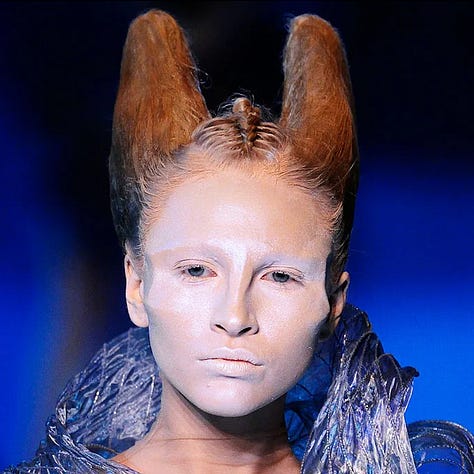
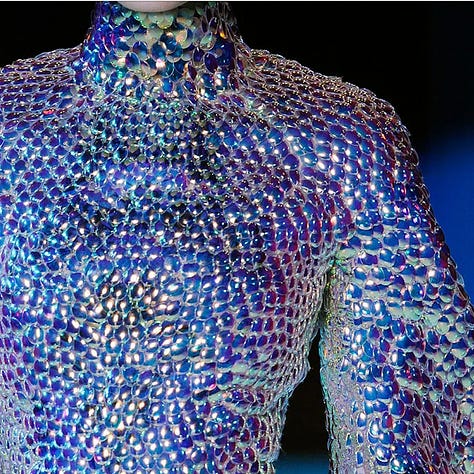
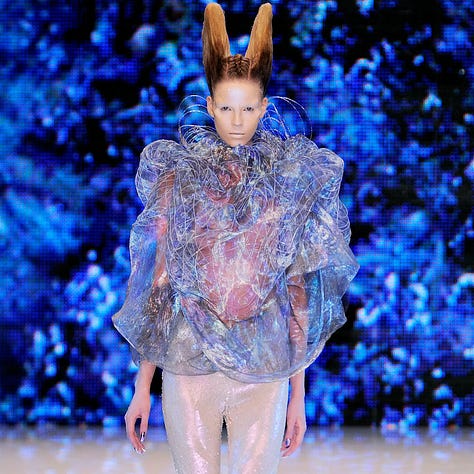
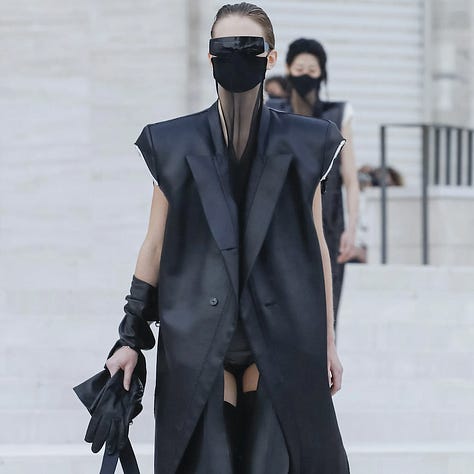
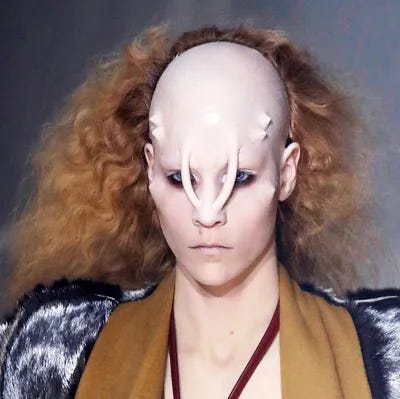
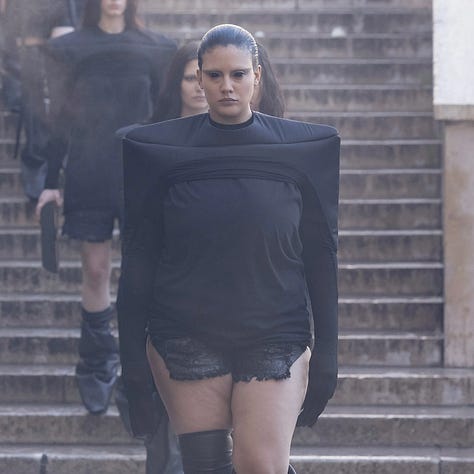
While there’s no shortage of archival material, an undeniable evolution is happening in terms of how doom and gloom show up in fashion moving forward. The apocalypse will certainly be televised, but it will not look the way that it has in the speculative fiction movies and tv shows, or fashion collections, of the past. As you can see in the examples above, apocalyptic fashion collections have often been overt, over the top, and involved a holistic dedication to the idea for that season’s show. I think moving forward, we will be hard pressed to find a show that isn’t laced with at least a subtle dystopian flair.
Our current state of dress is already inherently dystopian because… well, we’re literally getting dressed and staring down the barrel of cataclysm every day as it is. Sure, alien prosthetics and adaptive fish scales are dystopian, but can more pedestrian examples like pastel palettes and monochromatic dressing also be inherently apocalyptic? I certainly think so — keep reading to find out why.
“While times of crisis are when clothes seem to matter least, the irony is that fashion has been making itself at home with the idea of apocalypse as an aesthetic for quite some time” - High Snobiety
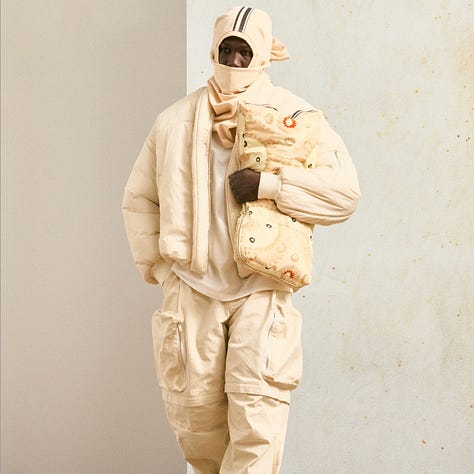
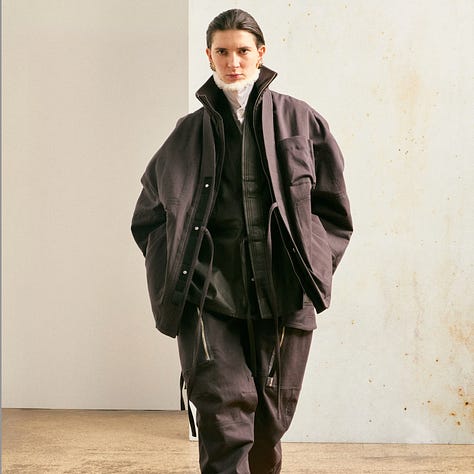
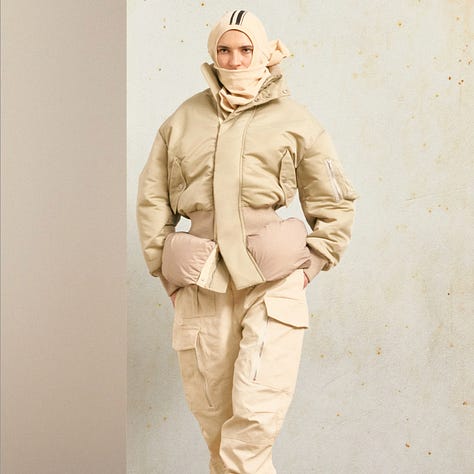
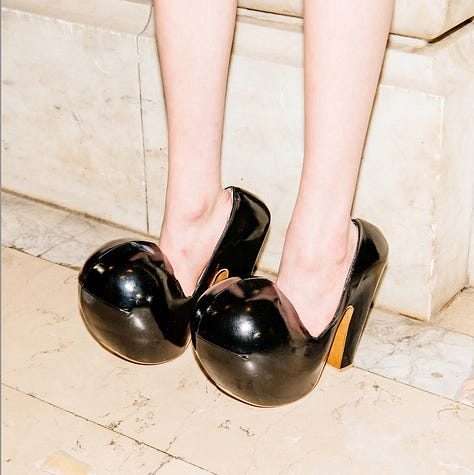
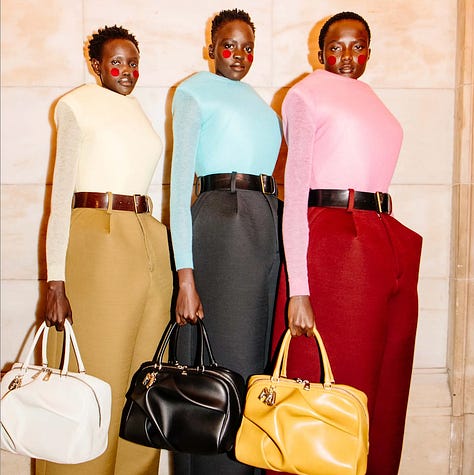
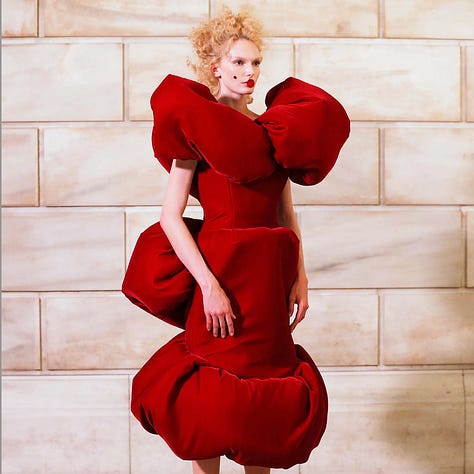
Climate Change and the Return of the Wild West
Climate change is likely one of the first things you thought of when I said we’d be discussing a modern doomsday. While fashion is of course a cultural indicator and form of expression, it’s also a behemoth industry responsible for 10% of emissions globally, a number that is predicted to increase by 50% over the next 5 years. Read that again. The incessant cycle of clothing production significantly contributes to the acceleration of climate change, and, ironically, we continue to make statements about climate change through fashion — whether these designers generally adhere to standards that actually reduce emissions remains to be seen in some cases.
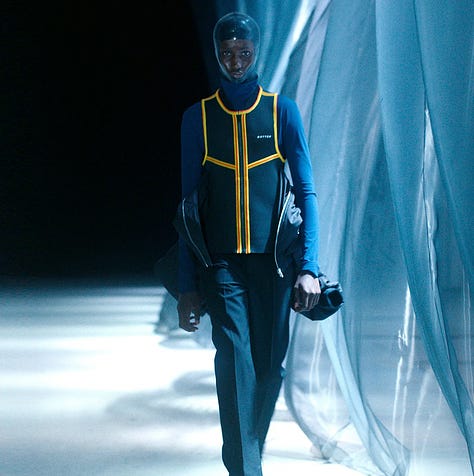
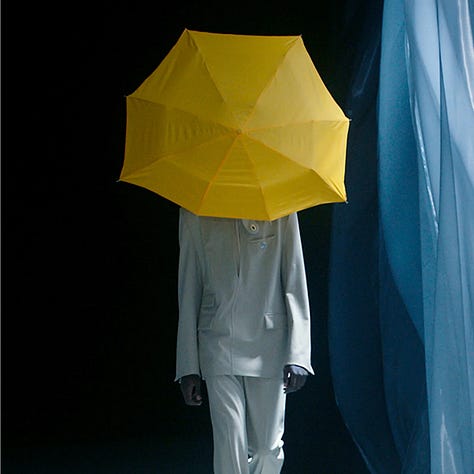
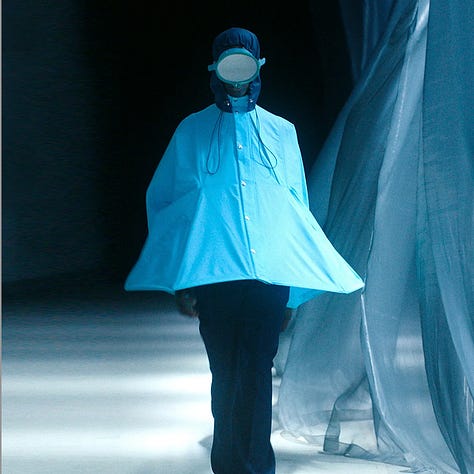
Climate Change → Extinction Events
Humans are, as we know, the modern day extinction event, just as the asteroid was to the dinosaurs. Literally, we are the cause and embodiment of the Holocene Extinction. As a result of this, the number of endangered and extinct species are ever-climbing. I’m starting to see this represented more heavily in fashion, spotting several references to this mounting loss.
I imagine we’ll continue to see an idealization of elements of nature that may cease to exist in our lifetime, whether animals or certain topographies. Fashion shows that take place in rainforest-esque environments, collections that glamorize air travel before it is no longer an option — I’m definitely envisioning some sort of surrealist safari happening any minute now, with the typical animals and role of human as observer somehow subverted — but, more broadly, I’m expecting fashion to generally call attention to the harmful effects of our actions and what they may steal from us. Stella McCartney’s recent “Save What You Love” campaign did just this.
“Stella McCartney’s Summer 2025 campaign isn’t just about fashion—it’s a glimpse into a world where nature’s beauty exists only in digital form… features the models alongside AI-generated doves and surreal hybrid birds. The decision to incorporate artificial creatures isn’t just aesthetic; it’s a warning. Nearly half of all bird species are in decline, and 3.4 billion birds are harmed or killed annually for feather down. If conservation efforts fail, AI-generated birds might be all that’s left” - The Fashionography
In a similar vein, I recently discovered VIN + OMI, a design duo that leaned into “chaotic sustainability” for their recent collection. They actually have a longstanding working relationship with King Charles, and they used milk cartons from his estate to create leather-like textiles for the collection.
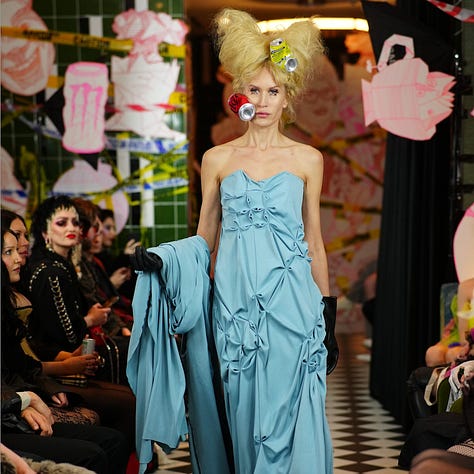
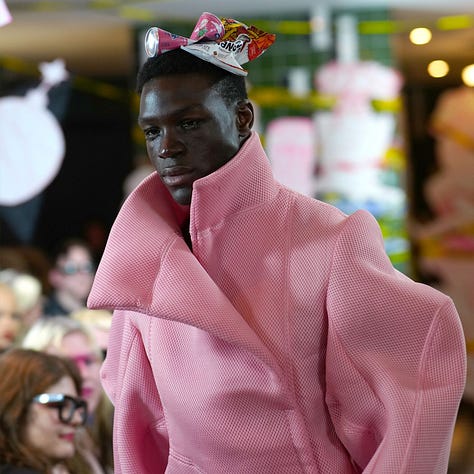
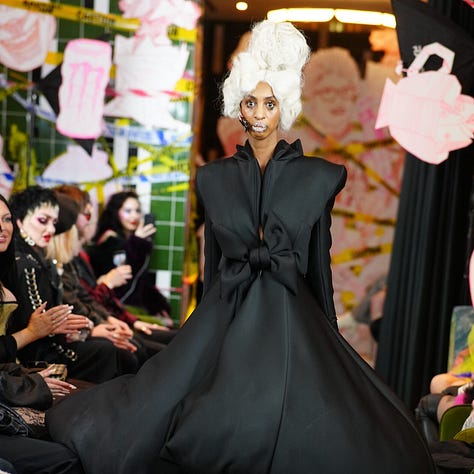
“X-ray scans of exotic animals were printed onto garments – perhaps a nod to London Fashion Week’s recent sustainability initiative of banning all exotic skins and furs in collections. Red text reading ‘NOT DEAD YET’ accompanied each image” - TheIndustry.Fashion on VIN + OMI
In addition to looking forward, I anticipate that we’ll see a harkening back to previous extinction events. I’ve noticed references to long-extinct species like the Woolly Mammoth, for example, popping up culturally and in dystopian novels as of late. A recent HypeBae article said that “fashion is entering its Jurassic era”. It’s true - furs and fuzzy, fluffy textures have so far been a runway mainstay in 2025, accompanying dinosaur-shaped accessories and feathered finishes. Just this morning I saw this commentary from Vanessa Friedman on last week’s Dior show: “Once upon a time … some lasers, asteroids lit in blood red that descended from above, and scattered crystal icebergs that popped up from the floor. There was a flying pterodactyl”.
Keeping it prehistoric, one of WGSN’s colors of the year for 2026 is Amber Haze — amber, of course, being a natural preservative method that has allowed us to view creatures from the distant past in extraordinary detail. WGSN says of Amber Haze: “This primal hue also draws inspiration from more earthy themes and long-term lifespans, being a colour and material with both a long past and a futuristic outlook”.
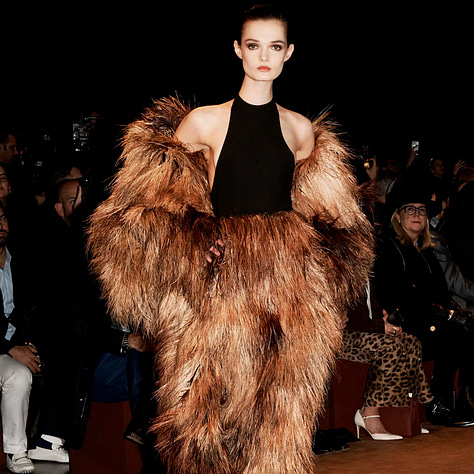
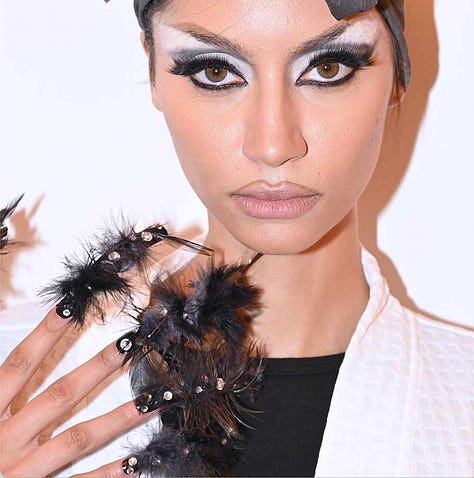
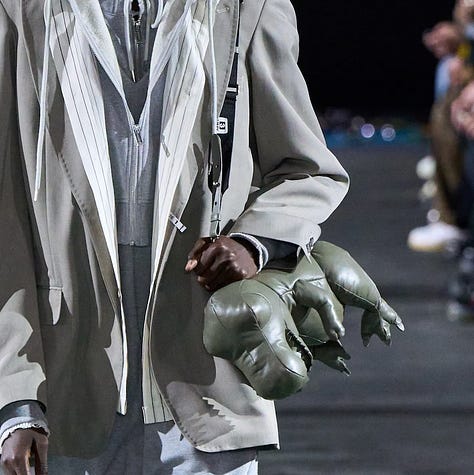
“The trend… feels rooted in rebellion. Following the rise of brat summer, feral girl fall and a general rejection of all things demure and mindful, we’re starting to embrace our wild sides and as a result, it’s beginning to reflect in our fashion choices. Outside of fashion, fads like the carnivore diet made a viral return a la TikTok last year, suggesting more of an appetite for animals in more ways than one…” - HypeBae
As that quote suggests, food consumption has also followed suit as people have turned back to red meats and cows milk over alternatives like plant-based meats and various nut / oat milks. I find food trends to be such an interesting sidekick to fashion trends, and enjoy watching them ebb and flow together. As further evidence, CPG branding trends conceptually seem to be erring on the side of… disaster. Food for the end of the world, anyone?
Climate Change → Dust Bowl
Interestingly enough, it was a futuristic sci-fi movie that initially sparked my interest in the Dust Bowl — cliche, maybe, but a recent Interstellar watch got me thinking about the future topography of the planet and its potential decimation. It reminded me of this dystopian book (yes, again, it’s required reading) which is also set amidst a near-future climate disaster that causes the earth to become completely inhospitable to crops. Once I noticed the pattern, I started seeing it everywhere in new book releases - Antidote by Karen Russell and Dust by Alison Stine, a speculative novel which “brings the haunting echoes of our past to a weather-beaten future”. It’s easy from there to see how it’s seeping into the sartorial scene and beyond.
“‘Survivalism’ isn’t a word one normally lumps in with others like ‘glamour’ and ‘style’, but according to the strategist and writer Lucas Mascatello, the idea of braving a dangerous future is one that has been a central pillar to many trends for quite some time (and will continue to be)” - High Snobiety
Hand in hand with decimation of arable earth and a lack of shelter comes the need for adaptable materials that protect us from nature’s harshest elements — I feel a pending umbrella trend coming on. More on this in part II.
“The market for skincare with anti-pollution properties is expected to reach $1.4 billion by the end of 2031 and consumers are looking to more technical clothing for sun protection… clients are now requesting products that can address new concerns related to climate change, from the sun’s rays to pollution-linked inflammation and damage to both skin and hair” - BOF
Dust Bowl → The 1930s
As I’ve been talking about for a while, we’re currently very entrenched in the trends and looks of the 1960s, but I’m starting to look at the fashion and feelings of the 1930s as a bellwether for what’s next. Personally, I’m extremely ready to reach further back into the archives of the earlier 20th century rather than the constant reimagining of the latter half — enough 70s / 80s/ 90s revival!

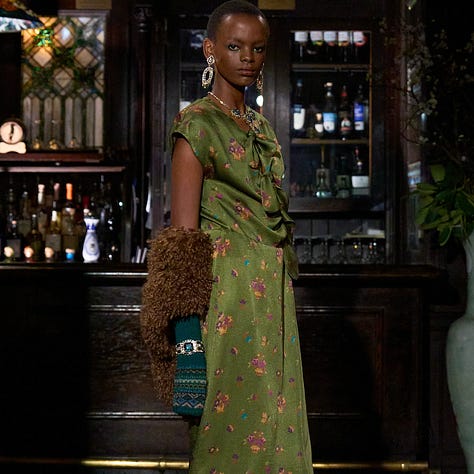

It’s easy to draw parallels between the 2020s and the 1930s. Vogue says of the latter: “Amid a post-stock-market-crash depression and with a dust bowl ensuing and a Second World War looming, the democratic ideals of ancient Greece fueled the escapist arts of the era”. For those of us who became adults in the last decade, we know the feeling of being hit with one disaster after another… after another. I could easily rewrite that sentence with just a few tweaks to apply to the late 2020s - amidst the post-pandemic pandemonium and with a climate crisis ensuing and a possible Third World War looming… you get the idea. Escapism is a buzzword in both decades for a reason.
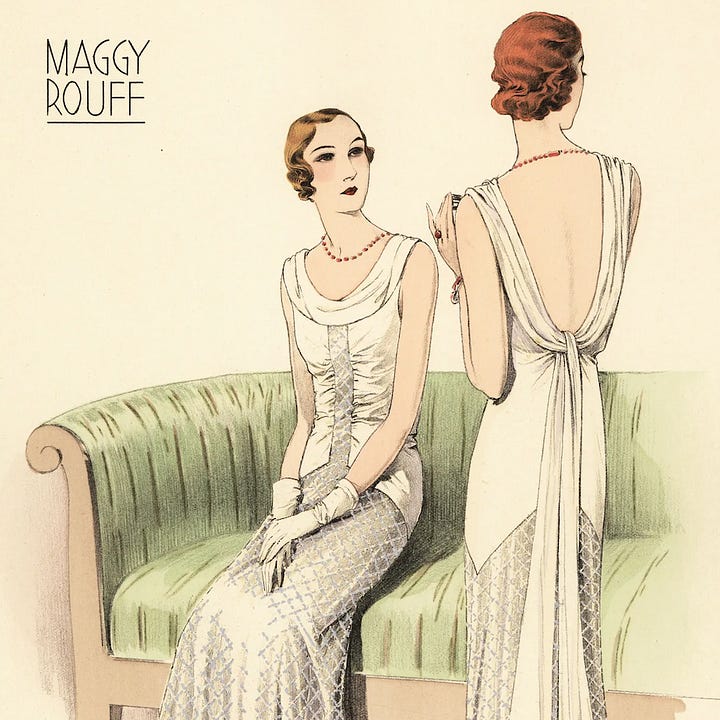
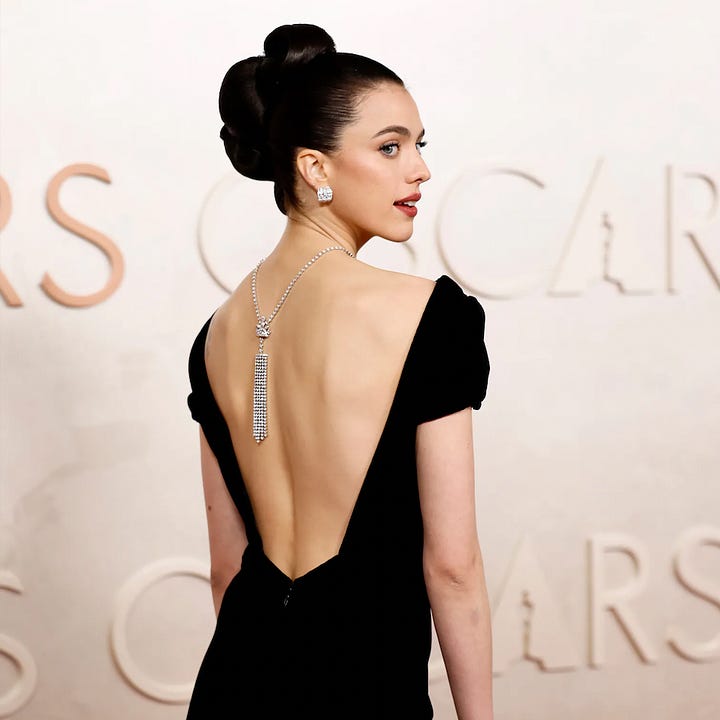
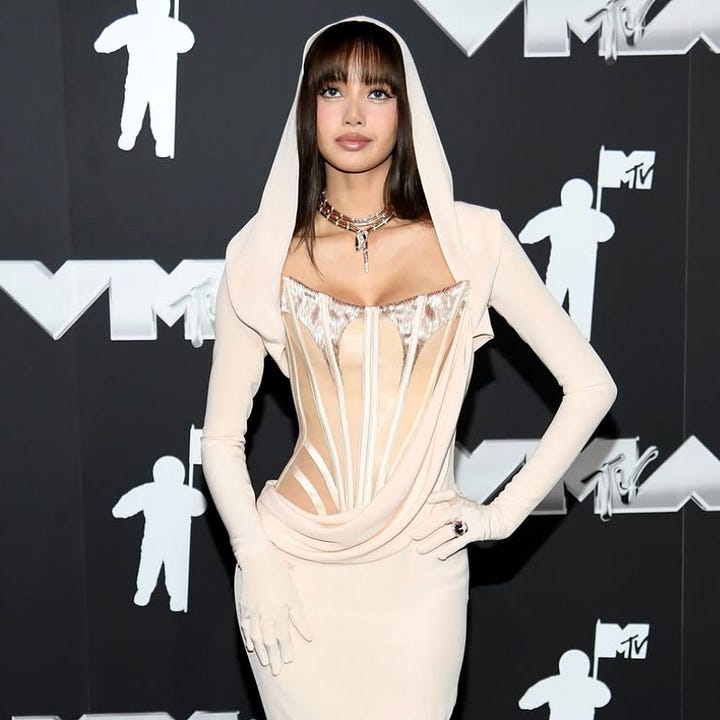
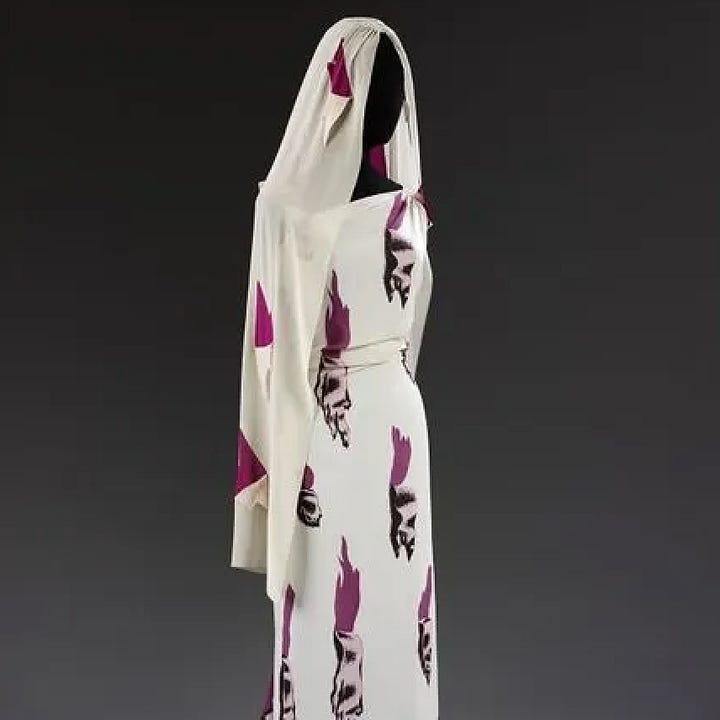
The backless dress was a popular silhouette in the 1930s, which we have seen rising in popularity this awards season alongside the adornment of back necklaces. Just this week, The Zoe Report called veils on the red carpet a trend to watch, a feature seen on quintessential ‘30s designer Elsa Schiaparelli’s designs. Interestingly, Lisa was said to be “channeling her inner Aphrodite”, a Greek goddess, in the above veiled Mugler look at the 2024 VMAs. If you recall from the last paragraph, the fashion of the 30s was inspired by “the democratic ideals of ancient Greece”.
The slip dress was a hallmark of the 1930s and then the 1990s, and we’re seeing it top the trend lists this season. And, as we know, young Hollywood starlets of today are tapping in to major Old Hollywood vibes on the red carpet, an aesthetic that similarly defined the look of the 1930s back when it was simply Hollywood, no “old” required.

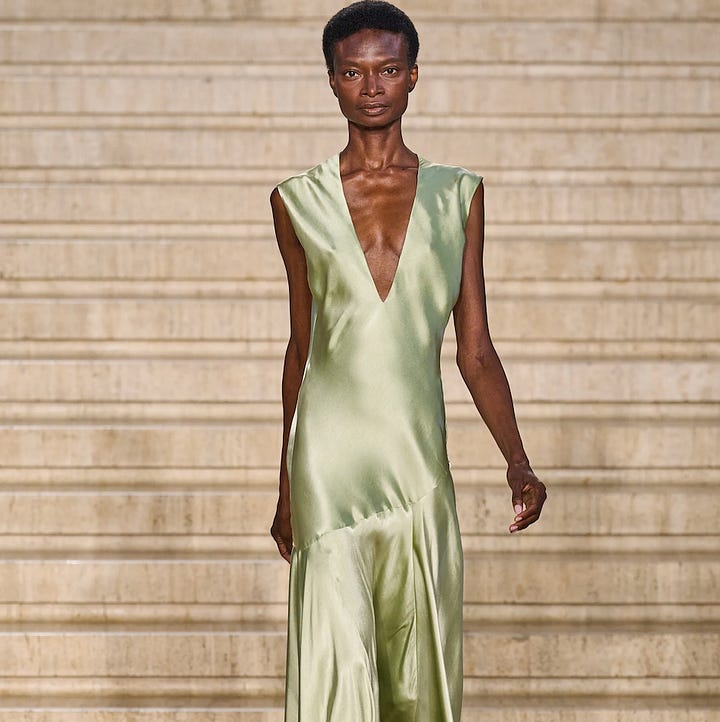
Dust Bowl → Westerns
If you’ve read a single fashion article in the last year, you probably know very well that the Western aesthetic has been back and in full swing — and not just the Western aesthetic, but Westerns as a media genre as well. Certainly a hallmark of a Western is, well… dust. What is actually interesting to me is the original concept of the Western as a solidly American form of entertainment that hinges on conquest and imperialism, that codifies traditional gender roles, that overlooks the reality of marginalized groups in favor of white men as heroes, that represents ideals of individualism and overly simplistic moral codes — all of which are traits that can be attributed also to the dangerous rise of conservatism in modern day America, too. And isn’t it ironic that many of the individuals and governmental bodies hawking those conservative ideals are such a large contributing factor in the creation of our current and prospective dystopia?
“Trends reflect the cultural psyche, mirroring the collective mood of the time. So, what does it say that Western is trending now? Perhaps it’s a reflection of our current reality—one where uncertainty looms and the landscape of industry, technology, and daily life shifts at a relentless pace. In many ways, it does feel like we’re living in the Wild West. And if that’s the case, why not dress the part?” - Jalil Johnson for Elle
And of course, even a sci-fi newbie knows that there is a direct correlation between Westerns and Space movies. There are multiple subgenres dedicated to the overlap — sci-fi western (uses traditional Western plots and settings, while incorporating science fiction elements) , space western (uses the themes and tropes of Westerns within science-fiction stories in an outer space setting) — somehow it seems that all roads lead back to space.



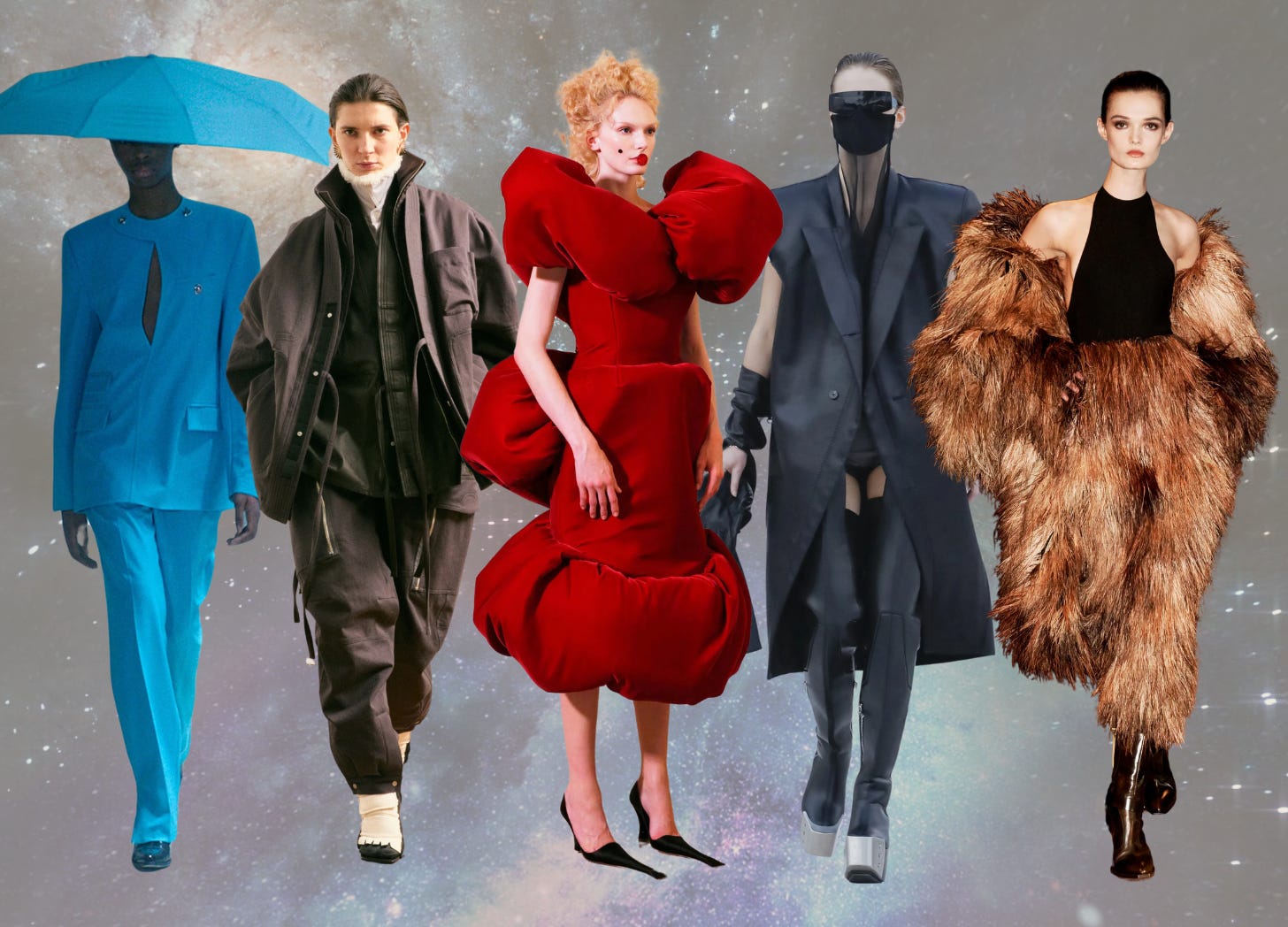
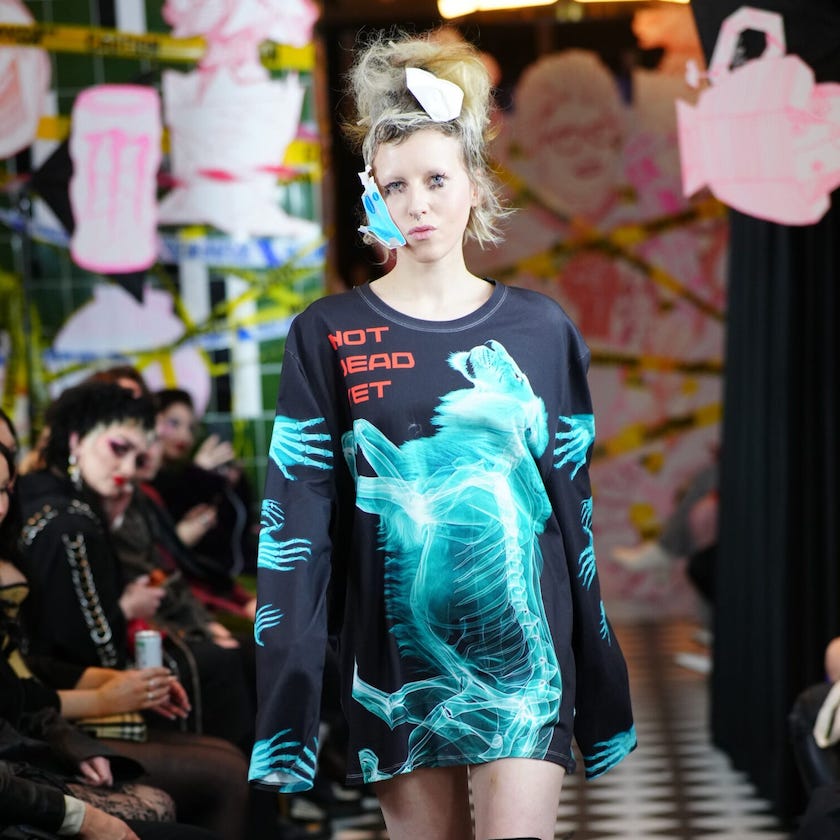
What a rich read! I love the parallels you made to Western movies in particular. Great stuff.